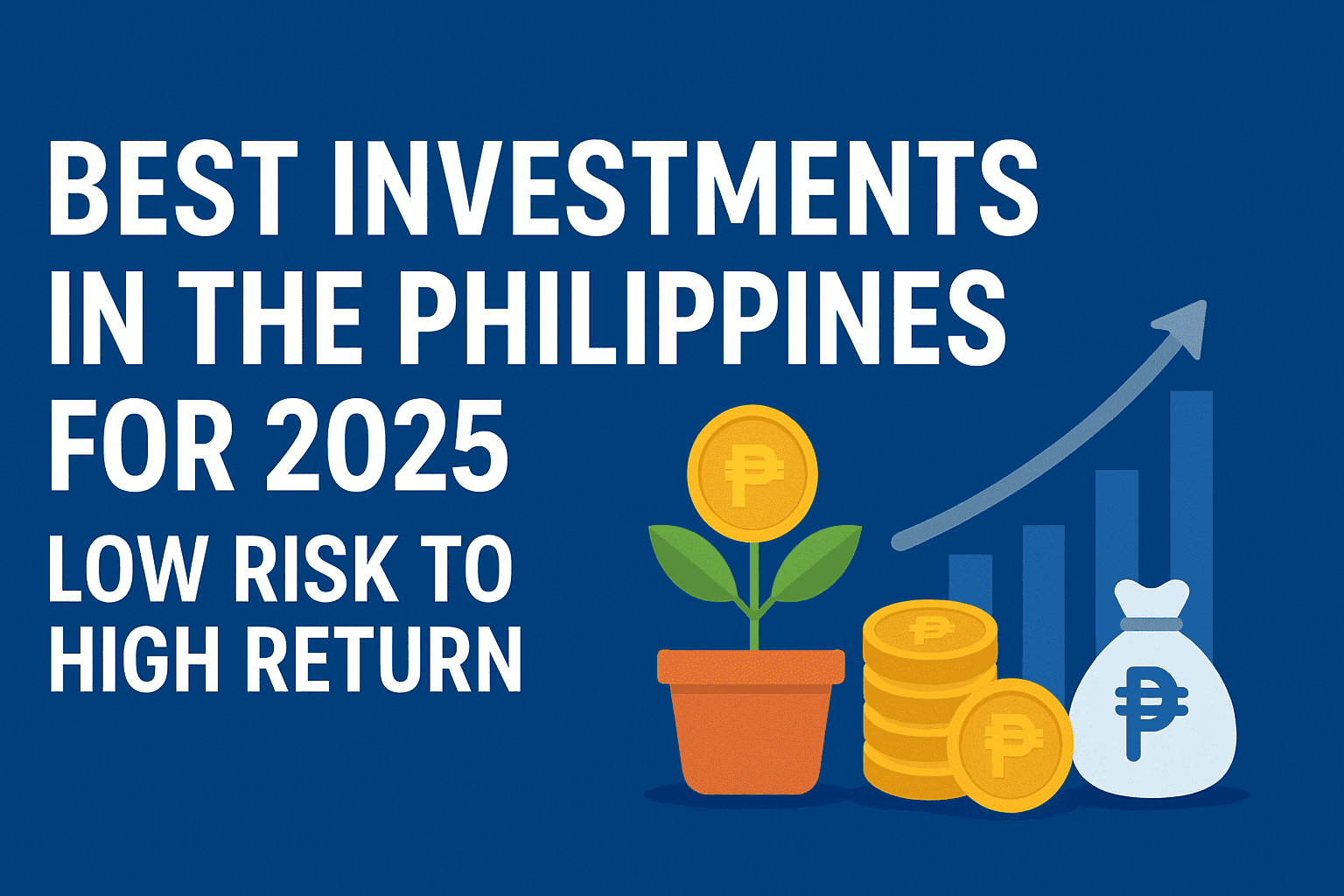So you finally have ₱10,000 ready to invest. Now the big question is: where should you put it?
Whether you’re a first-time investor or someone looking to grow extra cash, the trick is to match your investment choice with your risk tolerance and goals.
In this guide, we’ll go from the safest options to those with higher potential returns (and higher risks).
1. Digital Banks & High-Interest Savings Accounts
If you want your money to grow a little without any risk, digital banks are a good start.
Banks like SeaBank, Tonik, GoTyme, and Maya offer interest rates from 4% to 6% per year — much higher than traditional banks’ 0.10%.
Pros:
- Easy to open and manage using your phone
- Funds are insured by PDIC up to ₱500,000
- Instant access to your money
Cons:
- Lower returns compared to other investments
- Interest rates may change anytime
Best For:
Absolute beginners, emergency funds, or short-term savings.
2. Retail Treasury Bonds (RTBs) & Government Securities
These are debt instruments issued by the Philippine government to raise funds — in exchange, you earn fixed interest.
RTBs can be bought for as low as ₱5,000 through banks like Landbank and BDO.
Pros:
- Almost risk-free (backed by the government)
- Fixed income every quarter
- Affordable entry point
Cons:
- Returns are modest (around 5% p.a.)
- Locked-in for a set term (usually 3-5 years)
Best For:
Conservative investors looking for steady, guaranteed income.
3. Pag-IBIG MP2 Savings Program
Pag-IBIG’s Modified Pag-IBIG II is a voluntary savings program offering tax-free dividends averaging 6–8% per year in recent years.
Minimum investment is only ₱500.
Pros:
- Higher returns than regular savings accounts
- Government-backed
- Flexible — can be renewed every 5 years
Cons:
- Dividends are not guaranteed
- Funds are locked in for 5 years unless you withdraw early
Best For:
Medium-term savers who want higher returns with low risk.
4. Blue-Chip Stocks & Stock Index Funds
Investing in blue-chip companies like Ayala Corp., SM, or Jollibee, or in an index fund that mirrors the PSEi, can give better returns over the long term.
Pros:
- Potential for higher growth than bonds or MP2
- Dividend payouts from top companies
- Good for long-term wealth building
Cons:
- Stock prices can go up or down
- Requires patience and market knowledge
Best For:
Investors with at least a 5-year horizon who can handle some volatility.
5. Real Estate Investment Trusts (REITs)
REITs let you invest in income-generating real estate like malls, offices, and hotels without buying property directly.
Examples: AREIT, MREIT, RL Commercial REIT.
Pros:
- Regular dividend income (5–7% yearly)
- Easy to buy and sell via the stock market
- Diversifies your investment portfolio
Cons:
- Value can drop during market downturns
- Sensitive to real estate and economic conditions
Best For:
Investors seeking passive income and exposure to real estate without huge capital.
6. Mutual Funds & UITFs
These are professionally managed investment pools where your money is combined with others and invested in stocks, bonds, or both.
Pros:
- Managed by experts
- Low minimum investment (as low as ₱1,000 for some)
- Easy diversification
Cons:
- Management fees may reduce returns
- Performance depends on market conditions
Best For:
Those who want diversification without actively managing their investments.
7. Individual Stocks (Mid to High Risk)
Picking your own stocks can be rewarding if you know what you’re doing. With ₱10,000, you can start buying shares via platforms like COL Financial or BDO Securities.
Pros:
- Potential for very high returns
- You control what you invest in
Cons:
- Requires research and monitoring
- High risk if you make poor stock picks
Best For:
Active investors with knowledge of the stock market.
8. Cryptocurrency & Emerging Assets
Crypto assets like Bitcoin and Ethereum are known for massive price swings. Some investors have doubled their money in months; others have lost big just as fast.
Pros:
- High potential returns
- Accessible via apps like Binance and PDAX
Cons:
- Highly volatile and risky
- Not insured by PDIC or government
Best For:
High-risk takers who can afford to lose their investment.
Blogger’s Corner
If you have ₱10,000 to invest, the best choice really depends on your goals, time horizon, and risk tolerance.
If you can’t afford to lose any of it, start with digital banks, RTBs, or MP2.
If you can handle some risk for higher rewards, explore stocks, REITs, or even crypto — but only with money you can afford to lose.
Remember: the first step isn’t choosing an investment — it’s building the right mindset. Save consistently, invest wisely, and let your money work for you.
